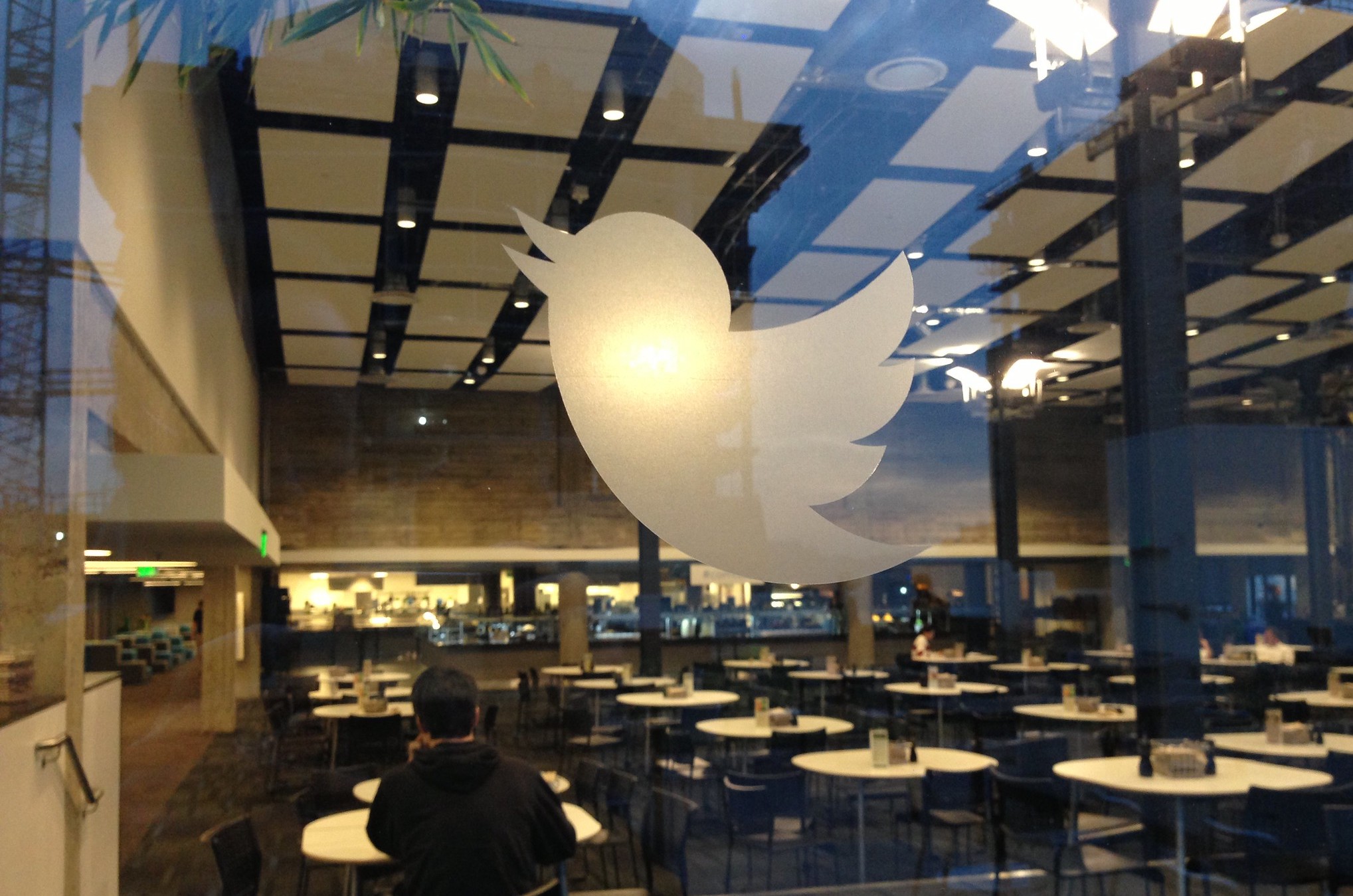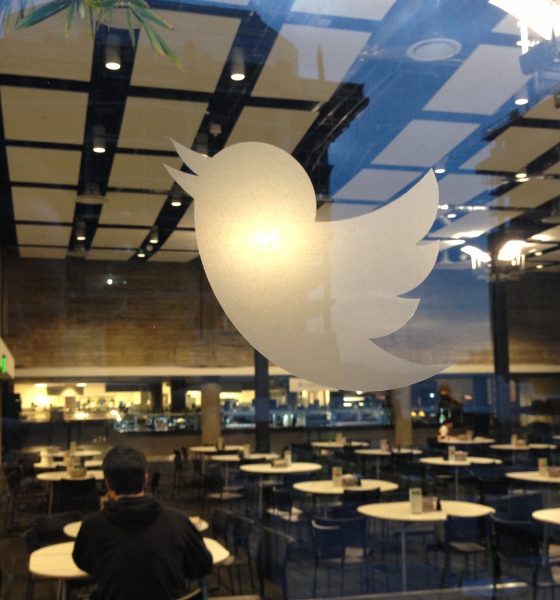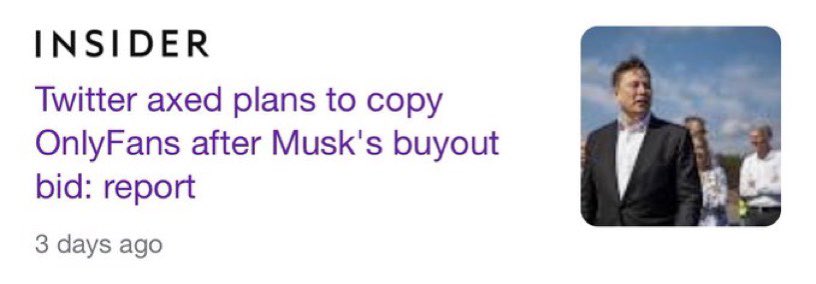

News
Elon Musk isn’t the reason Twitter shelved its OnlyFans competition plans
Elon Musk is not responsible for Twitter’s decision to change its mind on creating an OnlyFans competition feature as some headlines imply. In fact, he isn’t even involved with this problem at all. This has been an issue that Twitter has been plagued with well before Elon made his bid to buy Twitter earlier this year.
The Verge initially reported that Twitter’s problem with child sexual abuse ruined its plans for an OnlyFans competitor and cited internal documents and Twitter employees.
The only connection to Elon Musk was his bid on Twitter earlier this spring. However, several headlines are linking Elon Musk to this fiasco and this is creating a dangerous narrative that takes the focus from the problem of sexual exploitation of children and refocuses it on Elon Musk.
My friend and fellow journalist, Eliza Bleu (TheBlaze), is a survivor of human trafficking and is now a survivor and advocate. Her article about Elon Musk’s vision for Twitter potentially solving the problem with the platform’s child sexual abuse material was actually censored by Twitter.
She brought the following misleading headlines to my attention. According to Business Insider, Twitter canceled its plans with competing with OnlyFans after Elon Musk placed his takeover bid. Although that headline has been changed, the narrative has been set.

In the report by The Verge, Twitter employees said that the company could not accurately detect child sexual exploitation and non-consensual nudity at scale.” And this was concluded in April 2022. This had absolutely nothing to do with Elon Musk’s bid to buy the company.
The Washington Post also published a similar article touching upon child exploitation, Twitter, and connecting Elon Musk’s decision to bid on buying Twitter.
However, as Eliza pointed out in the tweet below, this issue with child sexual exploitation isn’t new. She pointed to a 2012 article by The Guardian that is over 10 years old, titled “Twitter is failing to police child pornography efficiently.”
I appreciate you writing about this but “now apparently” the Guardian wrote about this issue in 12’.
The platform is currently being sued by two minor survivors headed to @US9thCircuit
Multiple countries have threatened to remove Twitter because of child sexual abuse material https://t.co/7Ga6tHetMI
— 𝔈𝔩𝔦𝔷𝔞 (@elizableu) August 31, 2022
The real issue isn’t Elon Musk.
The issue has been long-standing and bringing Elon Musk into the narrative takes the focus away from the actual problem. In 2021, The New York Post reported that Twitter refused to take down widely shared pornographic images of a teenage sex trafficking victim because Twitter “didn’t find a violation.” of its policies.
Earlier this month, the San Francisco Examiner reported that Twitter declined to remove a video that shows the sexual exploitation of minors. The child was only 13 years old and he and his family begged Twitter to remove the videos. Twitter refused, stating that it had reviewed the content and didn’t find a violation of its policies.
Hany Farid, the creator of PhotoDNA, an image identification, and content filtering technology that has been used as part of digital forensics, pointed out that this was child sexual abuse material.
“It’s child sexual abuse material. He was 13 years old and being extorted. What the hell is Twitter doing?”
I spoke with Eliza and she pointed out that this problem was well before Elon Musk made his bid to purchase the platform.
“Unfortunately, Twitter has had a long history of being unwilling to tackle child sexual exploitation material at scale. John Doe # 1 and John Doe #2, the two minor survivors currently suing Twitter, bravely stepped forward to sue the platform for refusal to remove the content long before Elon Musk made a bid to purchase Twitter.”
“Elon Musk is truly the least of Twitter’s concerns. The suffering of vulnerable children exploited and monetized on its platform should be a higher priority. Any attempt by the corporate media to act like the Elon Musk bid had a hand in stopping their plans to monazite adult sexual content is disrespectful to the brave minor survivors currently suing the platform. It’s also not factual.”
Recently, Elon Musk outlined several more reasons as to why he wanted out of the Twitter buyout deal. Perhaps he’ll add this to the list.
Your feedback is important. If you have any comments, or concerns, or see a typo, you can email me at johnna@teslarati.com. You can also reach me on Twitter @JohnnaCrider1

News
Tesla FSD fleet is nearing 7 billion total miles, including 2.5 billion city miles
As can be seen on Tesla’s official FSD webpage, vehicles equipped with the system have now navigated over 6.99 billion miles.

Tesla’s Full Self-Driving (Supervised) fleet is closing in on almost 7 billion total miles driven, as per data posted by the company on its official FSD webpage.
These figures hint at the massive scale of data fueling Tesla’s rapid FSD improvements, which have been quite notable as of late.
FSD mileage milestones
As can be seen on Tesla’s official FSD webpage, vehicles equipped with the system have now navigated over 6.99 billion miles. Tesla owner and avid FSD tester Whole Mars Catalog also shared a screenshot indicating that from the nearly 7 billion miles traveled by the FSD fleet, more than 2.5 billion miles were driven inside cities.
City miles are particularly valuable for complex urban scenarios like unprotected turns, pedestrian interactions, and traffic lights. This is also the difference-maker for FSD, as only complex solutions, such as Waymo’s self-driving taxis, operate similarly on inner-city streets. And even then, incidents such as the San Francisco blackouts have proven challenging for sensor-rich vehicles like Waymos.
Tesla’s data edge
Tesla has a number of advantages in the autonomous vehicle sector, one of which is the size of its fleet and the number of vehicles training FSD on real-world roads. Tesla’s nearly 7 billion FSD miles then allow the company to roll out updates that make its vehicles behave like they are being driven by experienced drivers, even if they are operating on their own.
So notable are Tesla’s improvements to FSD that NVIDIA Director of Robotics Jim Fan, after experiencing FSD v14, noted that the system is the first AI that passes what he described as a “Physical Turing Test.”
“Despite knowing exactly how robot learning works, I still find it magical watching the steering wheel turn by itself. First it feels surreal, next it becomes routine. Then, like the smartphone, taking it away actively hurts. This is how humanity gets rewired and glued to god-like technologies,” Fan wrote in a post on X.
News
Tesla starts showing how FSD will change lives in Europe
Local officials tested the system on narrow country roads and were impressed by FSD’s smooth, human-like driving, with some calling the service a game-changer for everyday life in areas that are far from urban centers.

Tesla has launched Europe’s first public shuttle service using Full Self-Driving (Supervised) in the rural Eifelkreis Bitburg-Prüm region of Germany, demonstrating how the technology can restore independence and mobility for people who struggle with limited transport options.
Local officials tested the system on narrow country roads and were impressed by FSD’s smooth, human-like driving, with some calling the service a game-changer for everyday life in areas that are far from urban centers.
Officials see real impact on rural residents
Arzfeld Mayor Johannes Kuhl and District Administrator Andreas Kruppert personally tested the Tesla shuttle service. This allowed them to see just how well FSD navigated winding lanes and rural roads confidently. Kruppert said, “Autonomous driving sounds like science fiction to many, but we simply see here that it works totally well in rural regions too.” Kuhl, for his part, also noted that FSD “feels like a very experienced driver.”
The pilot complements the area’s “Citizen Bus” program, which provides on-demand rides for elderly residents who can no longer drive themselves. Tesla Europe shared a video of a demonstration of the service, highlighting how FSD gives people their freedom back, even in places where public transport is not as prevalent.
What the Ministry for Economic Affairs and Transport says
Rhineland-Palatinate’s Minister Daniela Schmitt supported the project, praising the collaboration that made this “first of its kind in Europe” possible. As per the ministry, the rural rollout for the service shows FSD’s potential beyond major cities, and it delivers tangible benefits like grocery runs, doctor visits, and social connections for isolated residents.
“Reliable and flexible mobility is especially vital in rural areas. With the launch of a shuttle service using self-driving vehicles (FSD supervised) by Tesla in the Eifelkreis Bitburg-Prüm, an innovative pilot project is now getting underway that complements local community bus services. It is the first project of its kind in Europe.
“The result is a real gain for rural mobility: greater accessibility, more flexibility and tangible benefits for everyday life. A strong signal for innovation, cooperation and future-oriented mobility beyond urban centers,” the ministry wrote in a LinkedIn post.
News
Tesla China quietly posts Robotaxi-related job listing
Tesla China is currently seeking a Low Voltage Electrical Engineer to work on circuit board design for the company’s autonomous vehicles.

Tesla has posted a new job listing in Shanghai explicitly tied to its Robotaxi program, fueling speculation that the company is preparing to launch its dedicated autonomous ride-hailing service in China.
As noted in the listing, Tesla China is currently seeking a Low Voltage Electrical Engineer to work on circuit board design for the company’s autonomous vehicles.
Robotaxi-specific role
The listing, which was shared on social media platform X by industry watcher @tslaming, suggested that Tesla China is looking to fill the role urgently. The job listing itself specifically mentions that the person hired for the role will be working on the Low Voltage Hardware team, which would design the circuit boards that would serve as the nervous system of the Robotaxi.
Key tasks for the role, as indicated in the job listing, include collaboration with PCB layout, firmware, mechanical, program management, and validation teams, among other responsibilities. The role is based in Shanghai.
China Robotaxi launch
China represents a massive potential market for robotaxis, with its dense urban centers and supportive policies in select cities. Tesla has limited permission to roll out FSD in the country, though despite this, its vehicles have been hailed as among the best in the market when it comes to autonomous features. So far, at least, it appears that China supports Tesla’s FSD and Robotaxi rollout.
This was hinted at in November, when Tesla brought the Cybercab to the 8th China International Import Expo (CIIE) in Shanghai, marking the first time that the autonomous two-seater was brought to the Asia-Pacific region. The vehicle, despite not having a release date in China, received a significant amount of interest among the event’s attendees.








